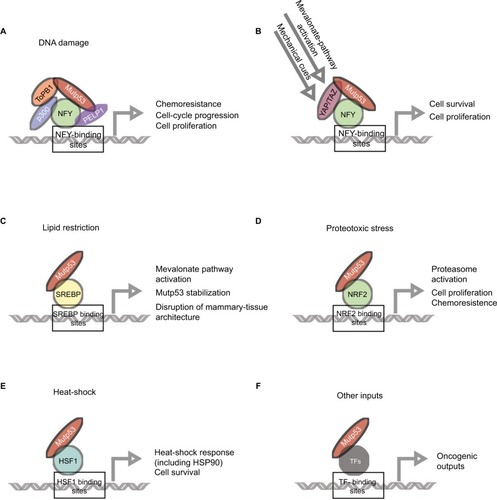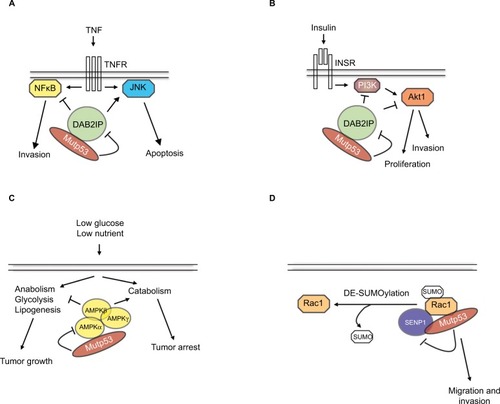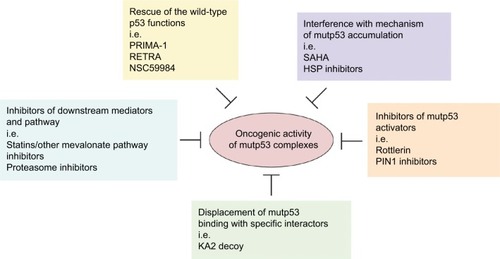Figures & data
Table 1 List of published mutant p53 interactions and their functional impact
Figure 1 Mutant p53 (mutp53) interacts with various transcription factors (TFs) to reprogram gene expression in cancer cells.

Figure 2 Mutant p53 (mutp53) forms complexes with cytoplasmic mediators of signal transduction.

Figure 3 Therapeutic approaches targeting mutant p53 (mutp53) protein complexes.

